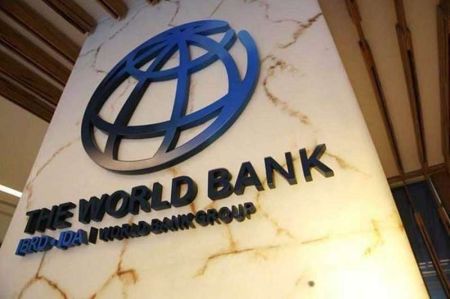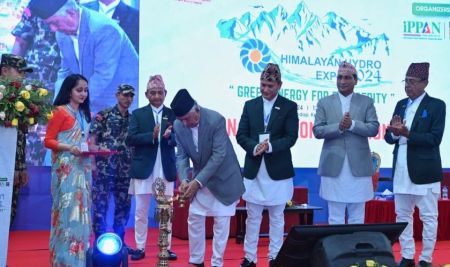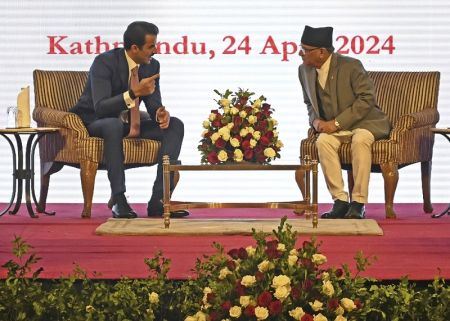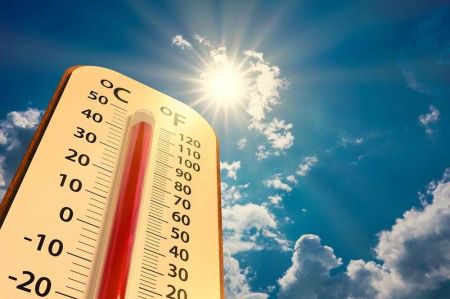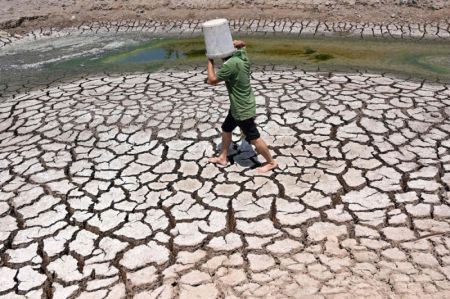May 31: The government has targeted an economic growth rate of 7.2 per cent in the coming fiscal year 2017-18. Deputy Prime Minister and Finance Minister Krishna Bahadur Mahara, while presenting the budget for the next fiscal year, on May 29, announced that the coming fiscal year would be an entry point of economic growth.
He said that inflation will also be limited to seven per cent. Mahara also mentioned that the new budget will create 400,000 new employment opportunities and one hundred thousand new self-employments.
According to Former Finance Minister Dr. Ram Sharan Mahat, the government's target of economic growth seems easy technically but this can be very difficult from the practical point of view. He says that the reasons stated in the budget such as adequate monsoon rain and a situation where there will be no blockade cannot be taken as basis for higher economic growth. "The government has not been able to demonstrate strong basis for sound economic growth," he mentioned.
Former Minister Mahat said that favorable climate, availability of chemical fertilizers and hybrid seeds can help attain 6.5 per cent growth rate in the current fiscal year.
Similarly, according to Finance Minister Mahara, improvement in power supply, increase in demand of construction as well as consumable materials will help attain 6.9 per cent growth that is more than the targeted 6.5 percent. He said that the annual budget in the previous year had predicted that there will be an inflation of 7.5 per cent this year, whereas in the coming FY, the inflation will be limited to seven per cent.
Former Deputy Governor of Nepal Rastra Bank (NRB), Krishna Bahadur Manandhar assumed that the inflation rate will remain at seven percent in view of the current inflation trend. "Decreasing interest rates and lowering inflation in Indian market will also help Nepal to achieve this target," said Manandhar. Minister Mahara emphasized that economic growth will contribute to improving the lifestyle of people and also bring improvement in the Human Development Index (HDI).
In the FY 2016/2017, the economic growth rate of Nepal went down to the lowest in 14 years whereas the target was for six per cent. Prior to this, during insurgency period or in the year 2001/2002, the economic growth rate was 0.19 per cent.
The government had a target of six per cent growth in the FY 2016/2017, but due to blockade and massive earthquake in 2015, the target could not be met in that year.
Though the economic growth rate was 2.32 per cent in the year 2015/16, the target was set for six per cent which was unachievable. Every year, the current expenditure of the government is growing, whereas development expense is decreasing.
On one hand, the proportion of development expenses is decreasing and on the other hand, the allocated expenses are also being spent quite less. According to the statistics from the Ministry of Finance, in the duration of the last 10 years, the average economic growth is just 3.8 per cent. The minimum economic growth rate was 0.77 per cent to five per cent in the period since Nepal was declared a Republic till the implementation of the new constitution. However, during this period, the price inflation rate is seven per cent to 13 per cent.
During the tenure of the late Prime Minister Girija Prasad Koirala in the FY 2006/2007, the target of economic growth was 5 per cent and price inflation rate was six per cent. During that period, the government achieved 5.8 per cent economic growth which was more than the target and the price inflation rate was 6.7 per cent which was slightly more than the government's target.
During Prime Minister Pushpa Kamal Dahal's first tenure when Baburam Bhattarai was the finance minister in FY 2007/2008, the economic growth rate was only 3.9 per cent while the target was seven per cent.
During the tenure of Madhav Kumar Nepal in 2008/2009, the economic growth rate was 4.3 per cent while the target was of 6.5 per cent. Similarly, during the tenure of Jhalanath Khanal as Prime Minister, the target was set for five percent but the government could only achieve 3.8 per cent of economic growth.
During the tenure of Prime Minister Baburam Bhattarai in FY 2009/2010, when Barshaman Pun was the Finance Minister, the target for economic growth was five percent. Though the target could not be met, the economy saw a growth after two years which was 4.6 per cent.
In 2010/2011, during the tenure of PM Baburam Bhattarai, the government targeted the economic growth rate of 5.5 per cent. However, due to political disturbance, the budget could not come in time and the government could not meet the target.
Similarly, during the government of Khil Raj Regmi as Chairman of the Council of Ministers in FY 2014-15, the government could only reach the target of 4.8 per cent economic growth instead of the target which was 5.5 per cent.
During the tenure of Sushil Koirala as prime minister in 2015/2016, Finance Minister Ram Sharan Mahat achieved only the growth rate of 2.32 per cent which was far less than the target of six per cent.


